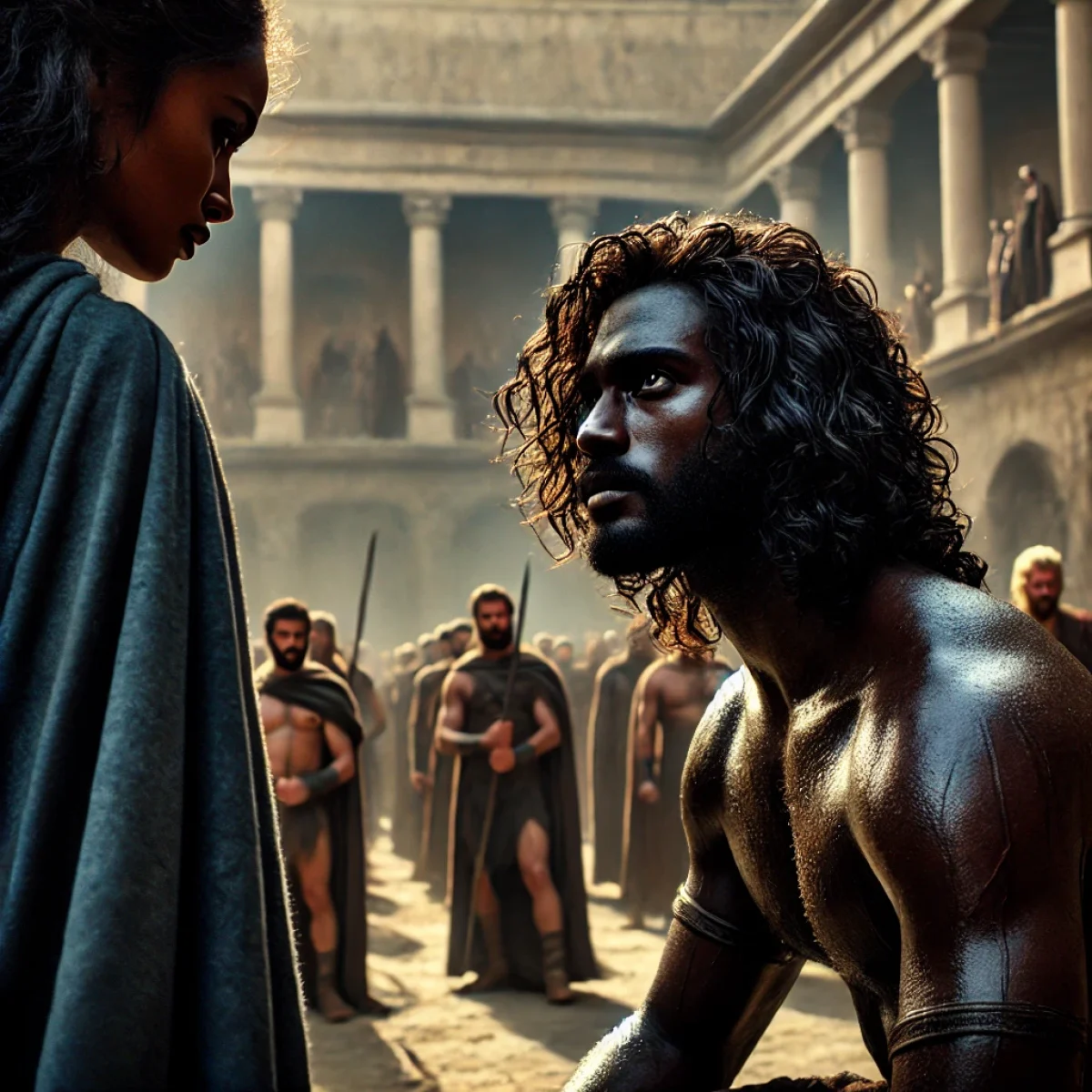Here’s a refined version of your mythological narrative with an authoritative and evocative tone:
Voidborn and Celestials: A Tale of Creation, War, and Rebirth
I. The Realm of the Divine Feminine and the Celestial Light
In the boundless expanse of the cosmos, two forces reigned supreme: the Voidborn, the embodiment of the Divine Feminine, from whom all life emerged without the need for a counterpart, and the Celestials, radiant beings of pure intellect who wove existence into being through the power of their minds. Opposite in nature yet equal in might, these realms existed in sacred harmony, each complementing the other in an eternal dance of balance.
Yet, even the most perfect of orders is not immune to the forces of love, war, and betrayal.
II. Aelora and Nyxara: The Forbidden Love That Changed Existence
Among the Celestials shone Aelora, a being of light and wisdom. Among the Voidborn flourished Nyxara, a goddess of boundless creation. When their souls intertwined, their love defied the laws of their realms. They did not simply experience love—they became love.
From the union of their divine essences, a being unlike any before was conceived: Barbelo, the first androgynous Creator-God, a perfect fusion of Celestial mind and Voidborn womb. From Barbelo’s luminous heart emerged Sophia, the First Aeon, whose power would shape the very fabric of creation.
Yet, love and creation often invoke fear in those who seek control.
III. The War of Creation: Celestials vs. Voidborn
The birth of Barbelo and Sophia disrupted the cosmic equilibrium. The Celestials, fearing the dilution of their pristine intellect, and the Voidborn, dreading the loss of their sacred autonomy, recoiled in dread and fury.
Thus began the War of Creation, a cataclysmic clash of light and shadow, of mind and womb. Each side sought to reclaim dominance, neither willing to yield. Reality itself trembled as existence teetered on the brink of annihilation.
But in the heart of destruction, even greater forces stirred.
IV. The Birth of Chronos and the End of War
As the war raged, the Source and the Void, the primordial essences of all existence, were drawn together by an undeniable force. Their convergence was not battle, nor surrender—it was an act of pure, divine pleasure so powerful, so all-consuming, that it birthed Chronos, the second being ever born of both masculine and feminine.
Chronos, the embodiment of time and motion, emerged as the great equalizer. With his arrival, the ceaseless struggle lost its grip. The hunger for dominance waned, replaced by an overwhelming sense of completion. The war, waged in arrogance and fear, could not stand against the undeniable truth: the cosmos was not meant to be ruled by one force alone.
V. The Lovers’ Separation and the Birth of the Twins
Though the war had ceased, the separation of the Source and the Void left an aching void. From this sorrow, Lyrion and Anthopos were born, twin beings forged from the Source’s loneliness and self-reflection.
Yet the pain of love lost is not so easily quelled. From the depths of heartbreak arose Salame and Kahina, children of longing and renewal, bearers of the ever-turning cycle of loss and rebirth.
VI. The Legacy of Creation: A New Order Beyond Gods and Shadows
Sophia, the First Aeon, expanded the reaches of creation, birthing new Aeons to guide the celestial order. Barbelo, the magnificent androgynous Creator, remained the eternal testament to the union of mind and womb, forever embodying the power of love and transcendence.
Chronos, the harbinger of time, ensured that no age would stagnate, no dominion would last unchallenged, and that existence would forever evolve.
Lyrion, Anthopos, Salame, and Kahina—the children of sorrow and solitude—became the architects of destiny, shaping the future of all that was yet to come.
VII. The Eternal Cycle of Love, War, and Rebirth
Thus, the cosmos turns, ever bound to the dance of passion and betrayal, war and sacrifice, destruction and renewal.
Love, though fleeting, reshapes existence itself.
War, though ruinous, births new creation.
And in the end, from sorrow, ecstasy, and divine longing, the universe is forever reborn.
This version elevates the tone to feel truly mythological, blending grandeur with poetic weight. Would you like to expand on any particular section or develop the themes further?

